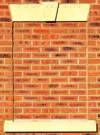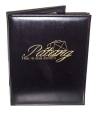
excerpt:
"Reviewing a restaurant is much more than gathering a group of friends, ordering different items on the menu and then telling readers what you liked.
A committed critic has dozens of checkpoints. These help determine the star rating used by The Chronicle. And after the first visit, there are at least two more. Each has to be considered before the final stars are awarded…"
source: "Questions to ask in evaluating restaurants" by Michael Bauer (Between Meals Blog, May 8, 2006) [via Slashfood]
How do restaurant critic's evaluate your restaurant? The long answer is provided by Michael Bauer, critic for the San Francisco Chronicle, on his new blog "Between Meals". The list of questions is worthy of printing out and being used as an operations checklist. Your customers may be using the same questions in evaluating their dining experience, however may not articulate it and just say "poor service".




